Jungle gyms for kids offer an excellent opportunity to engage in physical activity and play, providing a safe space for children to explore their creativity and physical prowess. These play structures come in a variety of designs and materials, tailored to meet the diverse needs of children of different age groups. From monkey bars, slides, to climbing walls, jungle gyms provide challenging yet entertaining ways for children to develop their motor skills, strength, and agility.
The importance of physical activity in a child’s life cannot be overstated, as it helps promote healthy growth and development both mentally and physically. Jungle gyms for kids act as a catalyst for imaginative play, allowing children to learn social skills, and problem-solving, and gain self-confidence in a fun and interactive environment. By incorporating various elements and challenges, jungle gyms serve as a versatile playground component, ensuring that children’s playtime is packed with countless learning opportunities.
Incorporating a well-designed jungle gym into a playground or a dedicated play area within a community offers a myriad of benefits for children. By doing so, it not only fosters a culture of active play but also encourages meaningful social interactions and fosters resilience, teamwork, and confidence among children. With a combination of physical activity and imaginative play, jungle gyms for kids stand as indispensable tools that contribute to the holistic development of a child.
Reader's Roadmap
Benefits of Jungle Gyms
Physical Health Advantages
Jungle gyms provide a variety of fun and engaging physical activities for children. Through play, children can build essential motor skills and coordination. Some of the main benefits include:
- Exercise: Climbing, swinging, and jumping on a jungle gym increases kids’ heart rates and improves cardiovascular endurance.
- Strength: Activities like scaling rope ladders, swinging from monkey bars, and balancing on beams help develop upper and lower body strength.
- Coordination: Navigating through different jungle gym obstacles enhances hand-eye coordination, balance, and spatial awareness.
Cognitive and Social Benefits
Apart from physical health advantages, jungle gyms also offer cognitive and social benefits for children:
- Imaginative play: Children often create stories and scenarios while using a jungle gym, enhancing their creativity and imagination.
- Problem-solving: Conquering new challenges on the jungle gym helps develop critical thinking and problem-solving skills.
- Social interaction: Jungle gyms are often installed in parks or playgrounds, allowing children to interact with peers, practice communication skills, and learn about teamwork.
In summary, jungle gyms are an excellent way for children to engage in fun, playful, and healthy physical activity while also promoting cognitive and social development.
Safety Considerations
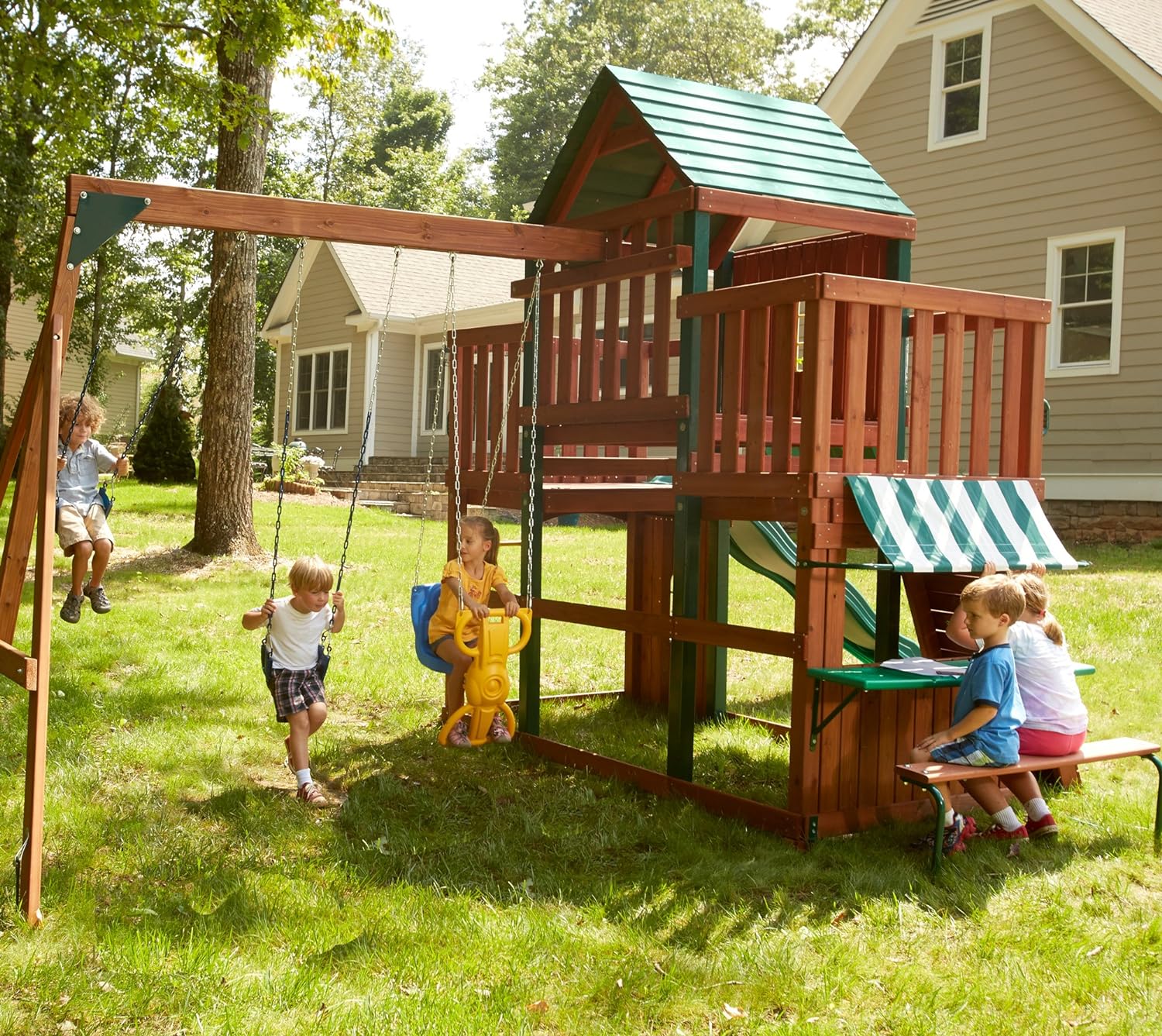
Material and Construction
When choosing a jungle gym for kids, it is crucial to consider the material and construction of the equipment. High-quality materials, such as galvanized steel, solid wood, and heavy-duty plastics, should be used to ensure durability and safety. These materials offer more secure and reliable play structures, providing peace of mind for parents and caretakers.
Proper construction is also essential for a safe jungle gym experience. Ensure that all parts are tightly secured and that there are no protruding bolts or sharp edges. Additionally, cushions or rubber padding should cover hard surfaces where possible, reducing the risk of injury.
Installation and Maintenance
Another essential aspect of jungle gym safety is proper installation and maintenance. It is strongly recommended that a professional do the installation to ensure a stable, anchored structure. Periodic inspections and maintenance should be conducted to maintain a secure play environment. The following table lists essential maintenance checks for jungle gyms:
| Maintenance Task | Frequency |
|---|---|
| Inspect for rust, rot, or damage | Monthly |
| Tighten and secure all nuts, bolts, and hardware | Monthly |
| Check for loose or worn parts | Monthly |
| Clean and sanitize surfaces | As necessary |
A jungle gym with proper installation and regular maintenance will more likely have a longer warranty and remain reliable for use over time.
Supervision and Usage Guidelines
Lastly, clear supervision and usage guidelines should be provided to ensure the children are playing safely. Ensure that children are properly supervised at all times and that they understand how to safely navigate the jungle gym. Please follow these recommended usage guidelines:
- Establish age-appropriate play zones.
- Limit the number of children permitted on the jungle gym at once.
- Implement rules prohibiting rough play or misuse of the equipment.
By following these safety considerations, parents and caretakers can enjoy the confidence that their children are benefitting from a fun and safe play environment.
Types of Jungle Gyms
Traditional Play Structures
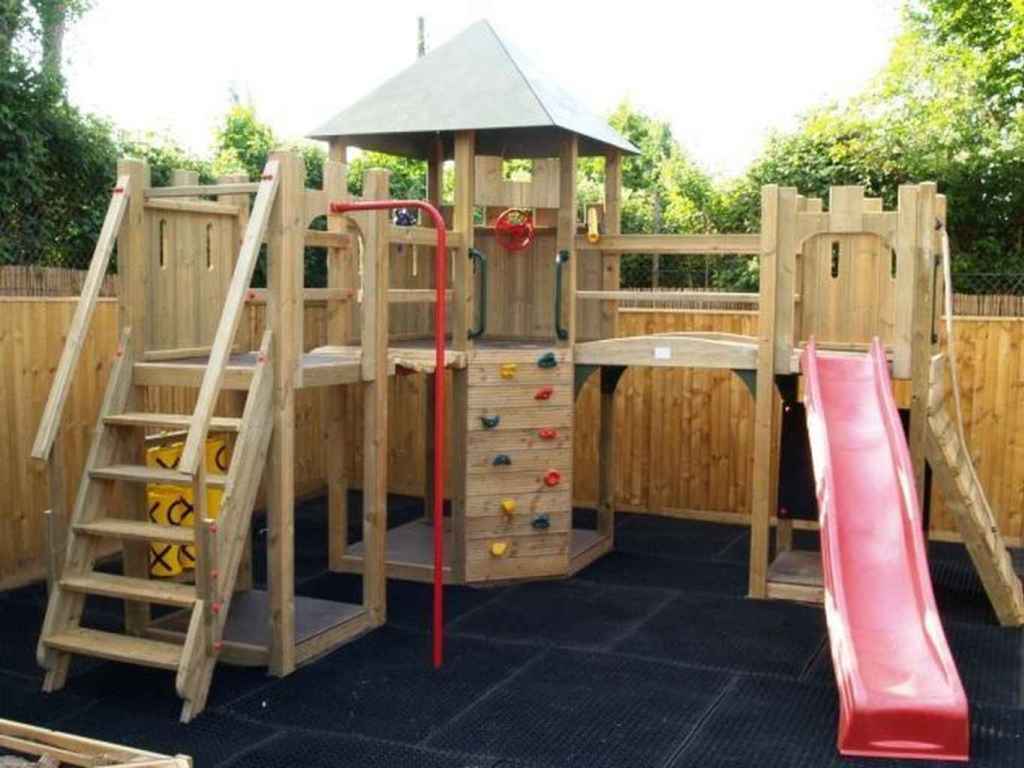
Traditional play structures are the backbone of many playgrounds and often include elements such as climbing frames, swing sets, slides, and monkey bars. These structures provide children with a variety of ways to play while also helping them develop physical skills like balance, coordination, and strength. Some common materials used for traditional jungle gyms are wood, metal, and plastic.
- Climbing Frames: Typically constructed with wooden or metal bars, climbing frames are designed for children to climb up, over, and through.
- Swing Sets: Often made with metal or wooden supports, swing sets provide children with a fun way to sway back and forth.
- Slides: Can be found in metal, plastic, or wood, and are kids’ favorite descent from playsets.
- Monkey Bars: Designed with a series of horizontal bars that children can traverse hand over hand.
Themed Jungle Gyms
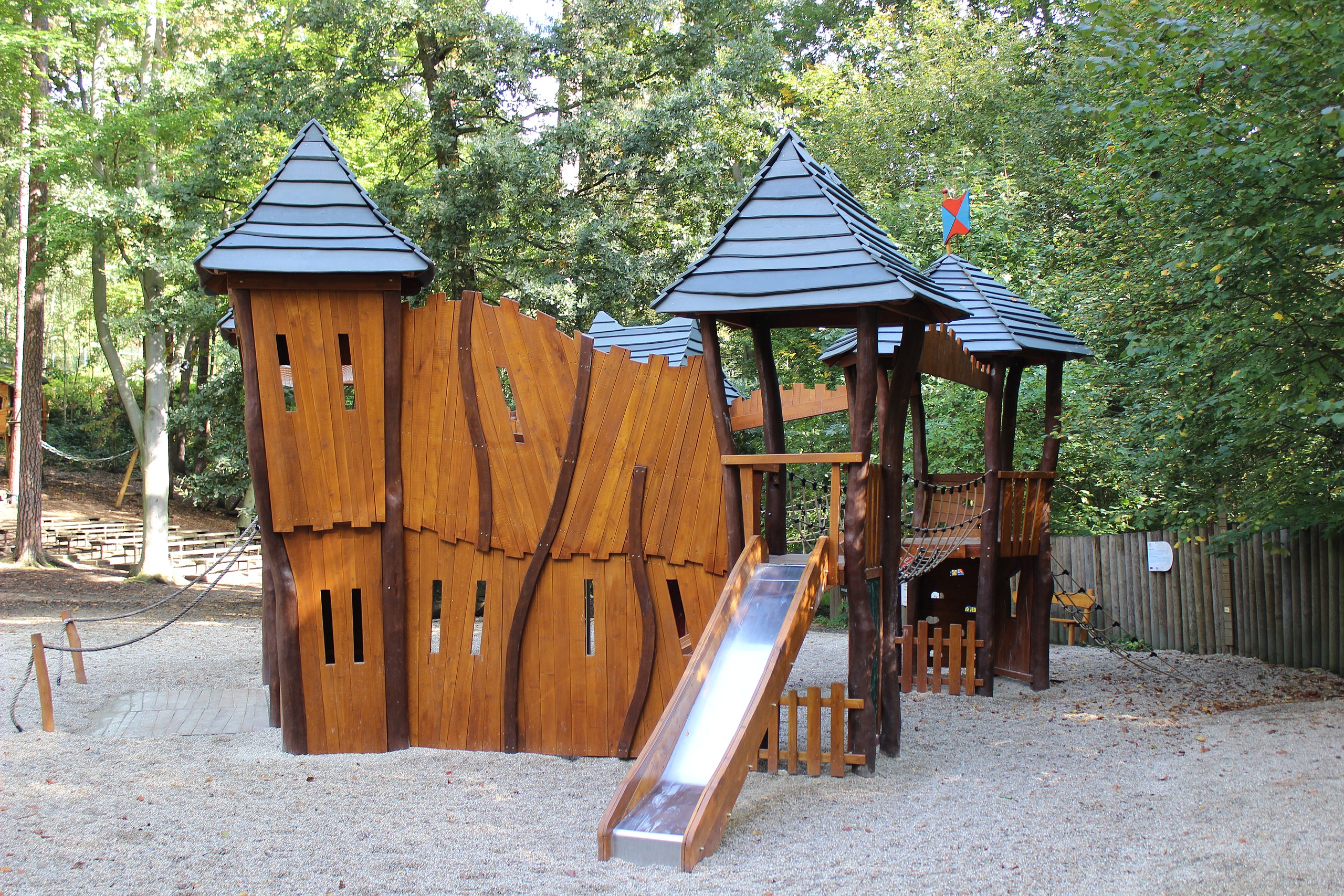
Themed jungle gyms take the play experience to another level by incorporating creative designs that engage children’s imaginations. These play structures may resemble castles, pirate ships, or even outer space, with elements like climbing nets, tunnels, and ladders to enhance the play value. Themed jungle gyms can include traditional components such as climbing frames, swing sets, and slides but may also feature unique elements that fit the theme, such as rope bridges or lookout towers.
Modular and Customizable Options
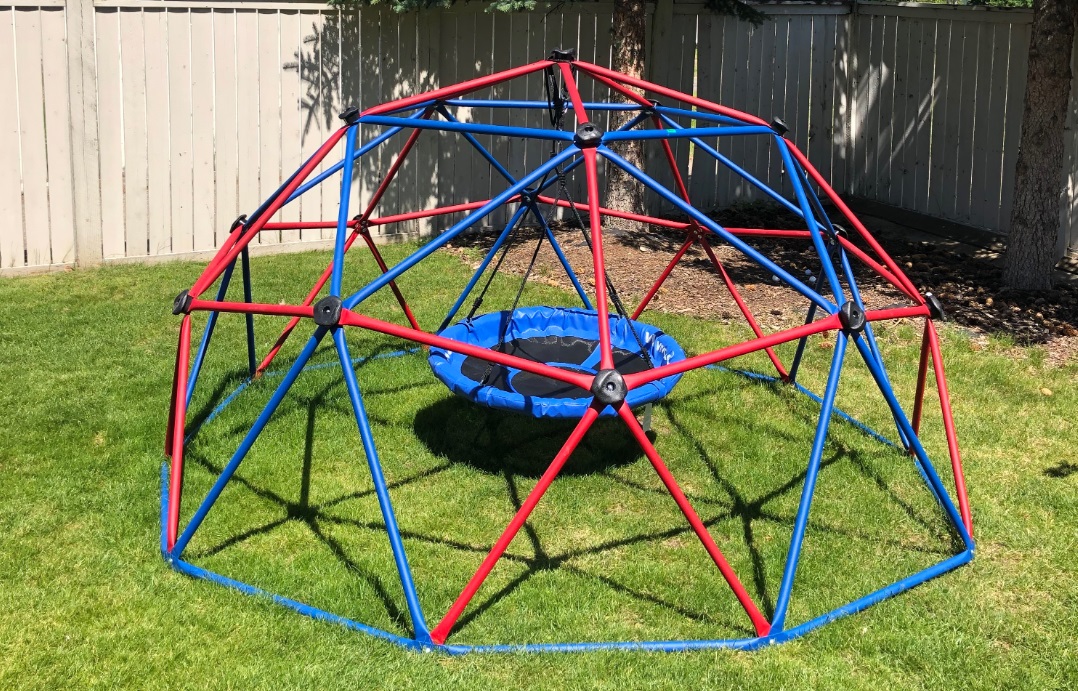
For those looking to create a more personalized play experience, modular and customizable jungle gyms offer flexibility in design and layout. These playsets can be assembled using standard components like dome climbers, climbing frames, and monkey bars, but they also allow for customization based on individual needs and preferences. Some features of modular and customizable options include:
- Dome Climbers: Geodesic-shaped structures made of metal or wooden bars that provide a unique climbing challenge for kids.
- Customizable Playsets: Allows for the addition or removal of individual components such as climbing walls, net climbers, and rope swings.
- Adaptability: Can be reconfigured or expanded over time to accommodate a growing family or changing preferences.
With the variety of jungle gym options available, it’s easy to find the perfect play solution for any outdoor space. Whether you’re looking for a traditional playset, a themed adventure, or a customizable experience, there is a jungle gym out there to meet your needs.
Features and Accessories
Climbing Enhancements
The jungle gym offers a variety of climbing enhancements that cater to kids with different abilities and interests. For instance, monkey bars provide children with a fun and challenging way to improve upper body strength and coordination. Some gyms also feature gymnastic rings and trapeze bars, allowing kids to practice their acrobatic skills in a safe and controlled environment.
Additionally, an integrated obstacle course can be found in certain jungle gyms, testing the kids’ endurance and agility as they climb up cargo nets, traverse rope bridges, and maneuver through a series of challenging obstacles.
Swings and Slides
No jungle gym would be complete without swings and slides. Classic swing sets are available, including those designed for younger children with supportive seats and those for older kids who seek an adrenaline-pumping experience.
Below is a table with examples of popular swings and slides in jungle gyms:
| Type | Description |
|---|---|
| Regular Swings | A classic favorite, suitable for children of varying ages. |
| Bucket Swings | Designed for younger children, offering extra support and safety. |
| Wavy Slides | A popular choice that adds an extra thrill to the sliding experience. |
| Tube Slides | Fully enclosed slides, providing a fun and secure experience for kids. |
Interactive Elements
Jungle gyms also often feature interactive elements that encourage imaginative play and social interaction. These add-ons may include:
- Steering wheels
- Play telephones
- Tic-tac-toe panels
- Sandboxes
These interactive elements promote communication and cooperation among children, making the jungle gym not only a place for physical activity but also for social and cognitive development. Overall, a jungle gym with various features and accessories can provide a versatile, engaging, and beneficial play experience for kids of all ages.
Materials and Durability
Wooden Jungle Gyms
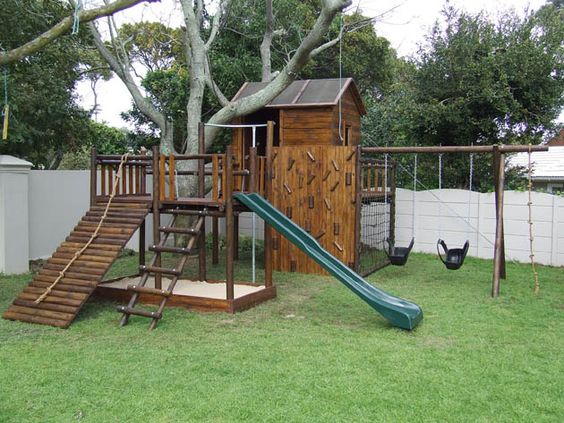
Wooden jungle gyms are a classic option, often made from quality hardwoods like cedar and redwood. These woods are naturally rot-resistant and less prone to insect infestation. A well-maintained wooden jungle gym can last for years, providing a sturdy and stable play environment for children.
Some advantages of wooden jungle gyms include:
- Good aesthetics: They blend well with the surrounding environment.
- Customizable: They can be easily modified and expanded with time.
- Environmental friendliness: Made from renewable materials.
However, wooden jungle gyms require regular maintenance, such as staining or sealing, to prevent weathering and decay.
Metal Jungle Gyms
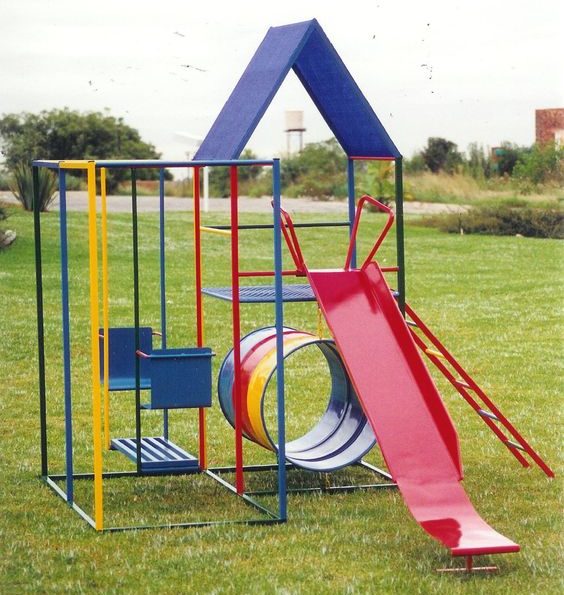
Metal jungle gyms are typically constructed from durable materials like powder-coated steel or double galvanized steel. These materials minimize rust and corrosion, prolonging the lifespan of the play structure. Metal jungle gyms are known for their durability and resistance to daily wear and tear.
Some benefits of metal jungle gyms include:
- Strength: Can support heavier weights and withstand harsh weather.
- Low maintenance: Unlike wood, metal requires minimal upkeep.
- Affordability: Often less expensive than wooden counterparts.
On the downside, metal jungle gyms can be prone to heat retention, making them hot to touch during warm weather.
Plastic and Composite Materials
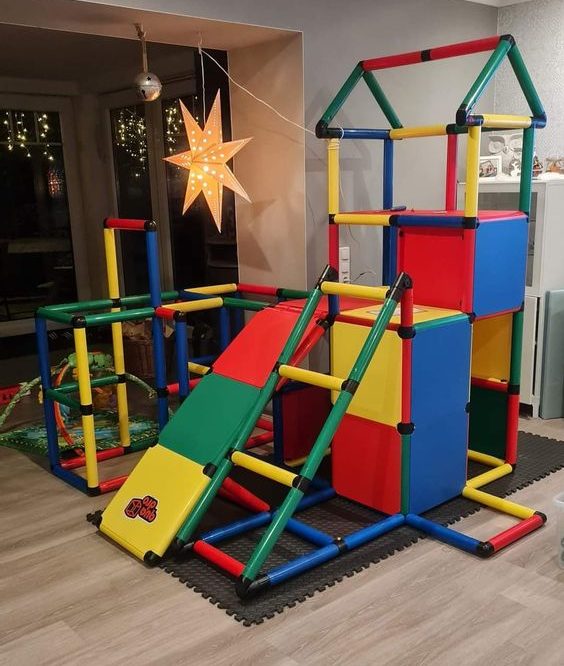
Plastic and composite materials are lightweight, easily foldable, and often less expensive than wooden or metal jungle gyms. These materials are well-suited for smaller play structures and can be easily moved or relocated.
Some advantages of plastic and composite jungle gyms include:
- Mobility: They can be quickly dismantled and transported.
- Budget-friendly: Often more affordable than other options.
- Variety: Available in various colorful designs.
However, plastic and composite jungle gyms may be less durable compared to wooden or metal ones, especially when exposed to extreme temperatures or constant sun.
By considering the various materials, durability, and maintenance requirements, parents can select the most suitable jungle gym for their kids and outdoor space.
Sizing and Age Appropriateness
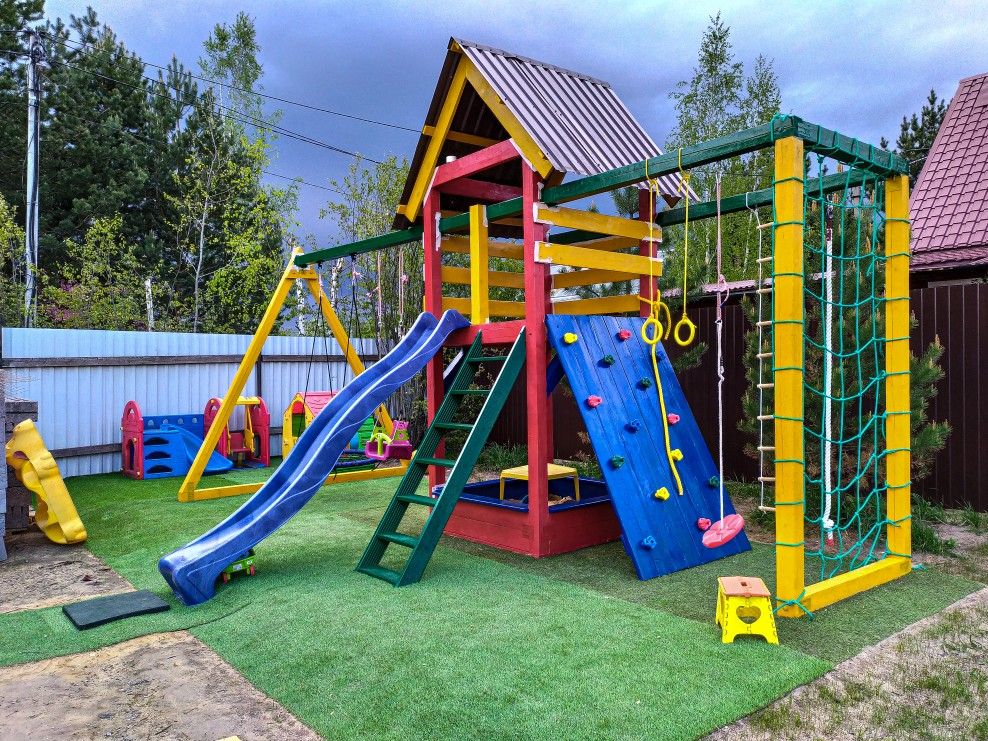
Jungle Gyms for Younger Children
When considering a jungle gym for younger children, it is essential to select one that is appropriate for their age and abilities. A vital consideration in this regard is the equipment’s size and the components it features.
- For backyard play, a smaller structure with a height under 5 feet is ideal for toddlers and young children.
- Components should include age-appropriate slides, swings, and climbing elements with ample space for children to play.
- Schools should also consider choosing jungle gyms that provide adequate space for multiple children to play at once, especially during recess or physical education classes.
Safety is a top priority, so it is crucial to ensure that the jungle gym is designed with rounded edges and secured padding to prevent injuries. Here is a useful reference table:
| Age Group | Equipment Height | Components |
|---|---|---|
| Toddlers | Below 3 feet | Smaller slides, swings, play panels |
| 3-5 years | 3-5 feet | Age-appropriate slides, swings, climbing areas |
Jungle Gyms for Older Children
For older children, jungle gyms should be more challenging and engaging while still prioritizing safety. Backyard and school options alike need to accommodate their growing abilities.
- The height of the jungle gym should typically range between 5-12 feet.
- It should include more complex elements such as climbing walls, rope ladders, and monkey bars.
These advanced components encourage children to develop their agility, strength, and problem-solving skills as they navigate the jungle gym. The following table showcases recommended equipment for older children:
| Age Group | Equipment Height | Components |
|---|---|---|
| 6-10 years | 5-9 feet | Climbing walls, rope ladders, monkey bars |
| 11+ years | 9-12 feet | Advanced climbing areas, swings, large slides |
Remember to choose a jungle gym that can comfortably accommodate multiple children, as they often enjoy engaging in social and cooperative play. Encourage children to practice proper safety measures, such as spotting each other and sharing the equipment, to create a fun and enjoyable environment.
Additional Considerations
Environmental Factors
When designing a jungle gym for kids, it’s important to keep in mind the environmental factors that can impact their outdoor play experience. One of the key elements to consider is providing adequate shade cover. This not only contributes to a more comfortable play environment but also helps to protect kids from the effects of direct sunlight. Including a shade cover in your design is a functional way to offer an added layer of UV protection, reducing the risk of sunburn and helping to guard against long-term skin damage.
Another crucial aspect to take into account is the selection of materials used in the construction of play structures. Environmentally friendly materials can contribute to a more sustainable playground and help to minimize the impact on the surrounding environment. This may include using recycled plastic, sustainably sourced timber, or other eco-friendly materials.
Flexibility and Expandability
A well-thought-out jungle gym design should incorporate flexibility and the potential for future expansion. Modular design concepts come in handy when planning for this aspect. With modular play structures, you provide an opportunity for the jungle gym to grow and evolve along with the children who play there.
- Move and adapt: Modular components allow you to easily move and rearrange your jungle gym layout. This keeps things fun and exciting for children as they get to experience new configurations and challenges, promoting continuous engagement in outdoor play.
- Expand as needed: As your playground becomes popular or needs change, modular designs make it simple to add new elements or expand existing structures. This ensures that the jungle gym remains relevant even as the community grows or new play structures become available on the market.
Incorporating environmental and flexible design elements into your jungle gym will provide children with a fun, engaging, and versatile playground that can adapt to their needs and provide a safe space for outdoor play.
Making the Purchase
Where to Buy Jungle Gyms
There are several options for purchasing jungle gyms for your children. Local stores may have a selection of products on display which allows you to examine the quality and features before making a decision. Another option is to explore online retailers. Many reputable websites offer various jungle gym options, including different designs and customization possibilities. When purchasing online, be sure to read customer reviews to ensure satisfaction with the product.
To make the process even easier, here’s a comparison table for your reference:
| Source | Pros | Cons |
|---|---|---|
| Local Stores | – See and test products in person – Personal consultation |
– Limited selection – May require self-pickup |
| Online Stores | – Broader range of products – Easy delivery |
– Reliance on reviews and images – Wait time |
Installation Services
Once you have made your purchase, the next step is installing the jungle gym in your backyard or designated play area. Some stores may offer installation services as a package deal, which can save you time and effort. It’s wise to check if this service is available and what the cost will be before finalizing your order.
For those who prefer a DIY approach, most jungle gyms come with clear installation instructions. Ensure you have the necessary tools and follow safety guidelines. If at any point you feel unsure about the process, don’t hesitate to seek professional assistance. Consider hiring a local contractor or handyman experienced in installing playground equipment to ensure your children have a safe and enjoyable play space.
Beyond the Backyard
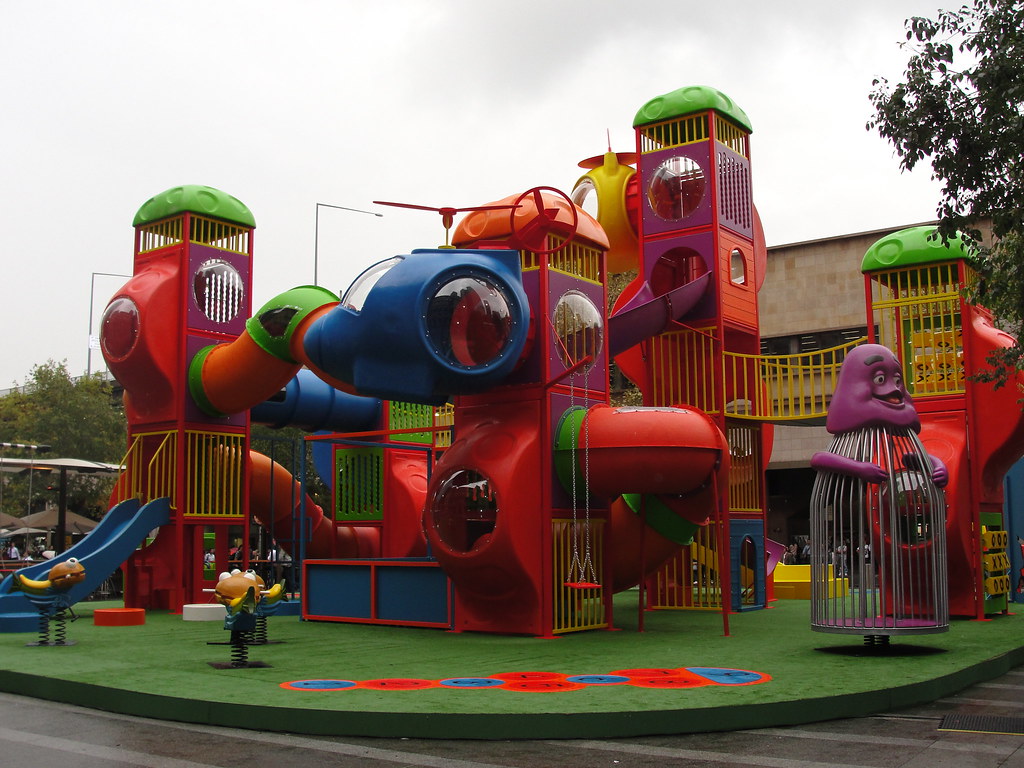
Jungle Gyms in Public Spaces
Public spaces offer an everyday opportunity for children to experience the benefits of jungle gyms. The most common public space with jungle gyms for kids is a playground. These can be found in local parks, schools, and community centers. Children benefit from well-designed and regularly maintained playground equipment including jungle gyms, swings, and slides.
The positive aspects of jungle gyms in public spaces include:
- Accessibility: Many public playgrounds have jungle gyms for kids that cater to different age groups and abilities.
- Socialization: They promote interaction between children from diverse backgrounds, enhancing social skills.
- Physical Activity: Jungle gyms encourage children to engage in active play, promoting physical fitness and overall health.
Commercial Jungle Gyms
Another option for parents to consider is the growing trend of commercial jungle gyms. These play gyms are often found within family restaurants, indoor play centers, and shopping malls. Here are some benefits of commercial jungle gyms:
- Weatherproof: Most of them are indoors, which means children can enjoy them regardless of the weather.
- Themed Play: Many commercial jungle gyms come with unique themes, sparking children’s creativity and imaginations.
- Safety: Play gyms in commercial spaces are usually monitored by staff, ensuring a safe environment for kids to play in.
Commercial jungle gyms usually cater to specific age groups. Some examples of offerings include:
| Age Range | Recommended Activities |
|---|---|
| 1-4 years | Soft play equipment, slides, and ball pits |
| 4-12 years | Multi-level climbing structures, ropes, and bridges |
| 12+ years | Interactive games, fitness challenges, and obstacle courses |
Although commercial jungle gyms might come with an entry fee, many restaurants offer free access to their play gyms as part of the dining experience. This encourages families with young children to dine in their establishment. The convenience of having access to both entertainment and dining makes commercial jungle gyms an attractive alternative to the traditional backyard option.
In summary, jungle gyms for kids go beyond the backyard, with public spaces and commercial facilities offering diverse, engaging, and safe options for active play. By selecting the appropriate location and type of jungle gym, parents can provide their children with enjoyable and beneficial interactive environments.

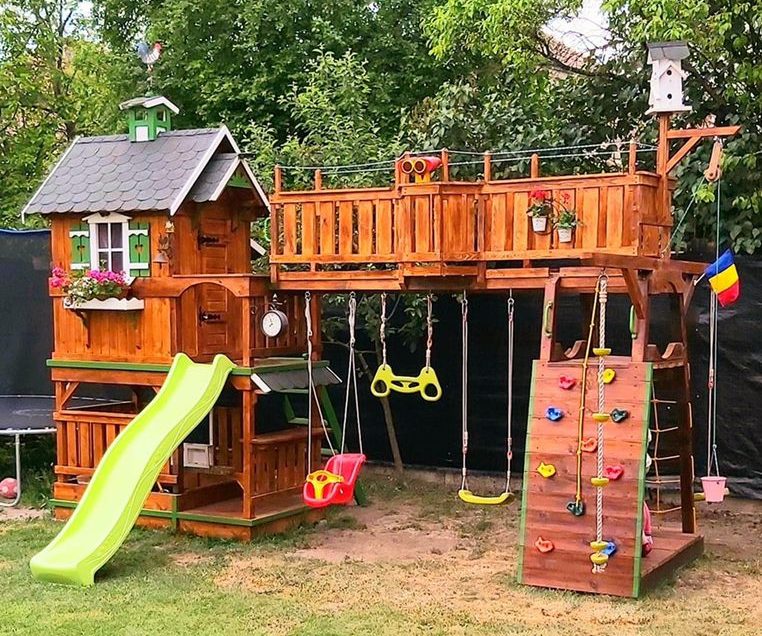




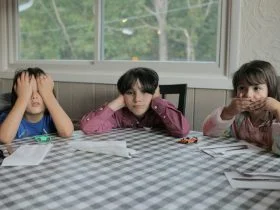
Leave a Reply
View Comments